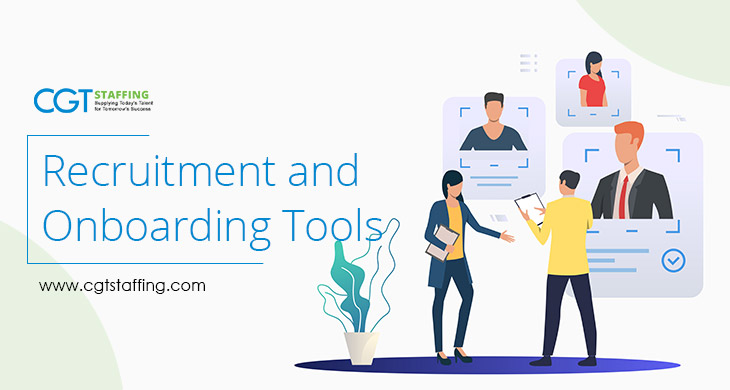Employees and employers begin forming relationships even before they are recruited. Many initial steps in most talent acquisition strategies contribute to this symbiosis. In fact, most employer-employee relationships are initially fostered during the recruitment process. An employer’s onboarding process forms another crucial step in terms of integrating new hires within the larger workforce.
From the point of hire onward, the work culture and work itself are key areas that help maintain good employee-employer relationships. It’s the initial steps, however, that frequently set the tone for the rest of the relationship. It makes sense, therefore, to continually improve this process using recruitment and onboarding tools. In doing so, employers create more opportunities for a stronger working relationship. Read on to learn more about why you should consider using these tools.
Stronger Controls and Compliance
Onboarding tools typically encourage better compliance with recruiting standards and policies. Recruitment is rarely as simple as interviewing a few candidates for a contract-to-hire position. It is usually a complex process that needs careful attention. Discrepancies during recruitment or recruiting aren’t just inefficient; they reflect deviation from standard processes and can potentially result in litigation under many circumstances. Similarly, loopholes in the process may be exploited or abused, resulting in serious damage to business productivity, employee turnover, and even business reputations.
Modern tools used in recruitment or onboarding offer a key advantage for employers. In particular, most tools can be configured to any business specifications. This strengthens the controls that prevent anyone from bypassing or manipulating the software. Likewise, it can ensure business compliance with state and federal laws and industry best practices. Such tools can also ensure consistency in compensation packages, such as with small business employee benefits. This offers visible proof of fair compensation policies in action.
Maximize Candidate Management Efficiency
Candidate management takes up a large chunk of any HR function’s hiring drive. With a period of thriving economic progress and more opportunities to acquire skills, the number of candidates has increased across nearly every industry. In high-volume recruitment, it is especially difficult to manually sort through candidates to find the best ones for a talent pipeline.
Even technical roles see a high number of applicants. With large volumes of information to process, it leaves recruiters with far less time to spend on individual candidates, and when doing so, it may be easy to overlook a top-quality candidate buried beneath a mound of average ones.
In short, conventional candidate management processes are inefficient at best. With a growing focus on digital transformations, the HR function also benefits from. In particular, recruiters should be able to improve their candidate management efficiency with the automation and ML features many such tools include. With a clearer view of applicants, and more time to devote to candidate engagement, the probability of a successful long-term hire increases.
Optimize Recruitment Costs
Recruitment functions, like any business department, incur operational costs. Recruiters often have their own performance appraisal standards to meet, but the function as a whole also has certain targets when it comes to utilizing hiring budgets. That also includes how efficiently recruiters spend the budget.
Minimizing business costs (including hiring costs) is always welcome in any business wanting long-term sustainability. Automation, analytics, and even outreach features in most recruiting tools are useful in various steps along the process, but the biggest advantage they offer is in terms of saving costs.
Recruiting software streamlines various processes within the function. This helps recruiters devote more time to high-priority tasks that cannot be automated. It also promotes increased accuracy and ease of information access.
Most tools can help you improve productivity and minimize inefficiencies at the same time. Some may even make it easier for HR managers to coordinate with all stakeholders centrally. That means employees, HR recruiters, and even third parties like staffing partner firms can be on the same page at any given time.
